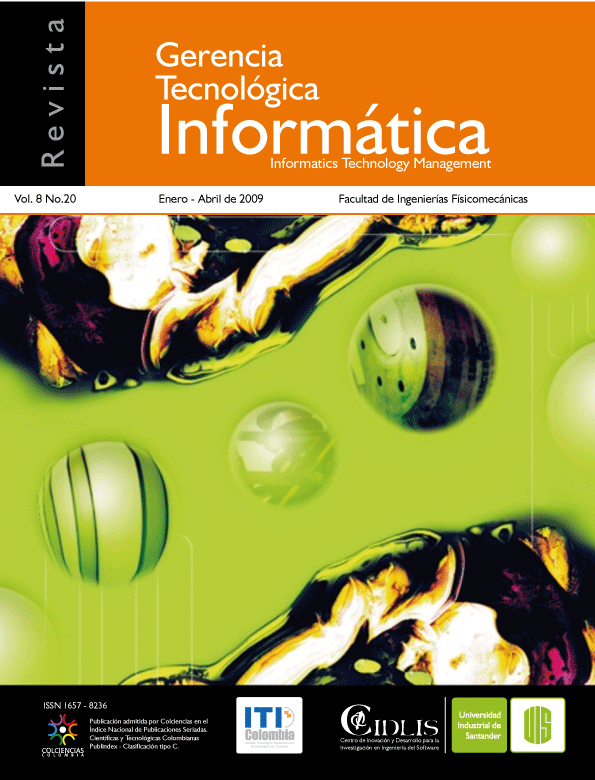MODELO DE PROPAGACIÓN EMPÍRICO PARA PREDICCIÓN DE PÉRDIDAS DE POTENCIA EN SEÑALES INALÁMBRICAS BAJO EL ESTÁNDAR IEEE 802.11B/G
Publicado 2010-07-28
Cómo citar
Resumen
RESUMEN
En este artículo se presenta un modelo de pérdidas de potencia en la propagación para las señales bajo estándar IEEE 802.11b/g, en dos tipos de ambientes: en espacio libre sin obstáculos, y luego con obstáculos como arboles, y densidad poblacional. Este modelo fue validado mediante campañas de medidas usando un Acces Point 1200 cisco, un analizador de espectro, y el software cisco Aironet Site Survey Utility; y contrastado con los resultados de otros modelos empíricos. El efecto de factores como el medio ambiente y la presencia de obstáculos en el análisis del modelo, conlleva a la inclusión de una variable aleatoria log-normal dentro de la ecuación de propagación. Finalmente se presenta la implementación de una interfaz gráfica que permite visualizar las pérdidas de potencia para el modelo propuesto y comparar los resultados con las curvas de diferentes modelos.
PALABRAS CLAVES: Estándar IEEE 802b/g., Modelo de propagación empírico, Pérdidas de potencia, Sistemas Wi-Fi.
ABSTRACT
This paper presents a model of power losses in the spread for signals under standard IEEE802.11 b/g, in two types of environments: in free space without barriers, and obstacles such as trees, and population density. This model was validated by means of using a Cisco 1200 Access Point, a spectrum analyzer, software and Cisco Aironet Site Survey Utility and contrasted with the results of other empirical models. The effect of factors such as environment and the presence of obstacles in the analysis of the model leads to the inclusion of a lognormal random variable in the equation of propagation. Finally presents the implementation of a graphical interface that lets you view the loss of power for the proposed model and compare the results with curves of different models.
KEYWORDS: Location system, IEEE 802 /g Standard, Propagation model, Wi-Fi systems.
Descargas
Referencias
- A.K.M. Mahtab Hossain, Hien Nguyen Van, YunyeJin, Wee-Seng Soh. Indoor Localization Using Multiple Wireless Technologies.
- ALEXANDER, Tom. Optimizing and TestingWLAN. 2007.
- BURDEN, Richard. FAIRES, Douglas. Análisis Numérico. Séptima edición. Thomson Learning. 2002. 831p.
- HAKIN. Sistemas de Comunicación. 1 ed. México.Limusa Wiley, 2002. 816p
- KARLOF, Chris. A practical evaluation of Radio Signal Strength. 2005.
- LEE W.C.Y. Mobile radio signal correlation vs antenna height and spacing, IEEE Trans. Vehiculartechnology.
- LEE W.C.Y. Mobile communications Design fundamentals, Howard W. Sams and Co.[8] RAPPAPORT, T. Wireless Communication, PrenticeHall, 1996.
- SEYBOLD, Jhon. Introduction to RF propagation.Pág 190.
- HANSLETT, Christopher. Essentials o Radio WavePropagation. Publicación Cambridge wireless essentials series. 215p.
- BLAUNSTEIN, Nathan. Radio Propagation andAdaptive Antennas for Wireless CommunicationsLinks, Editorial Wiley. 636p.
